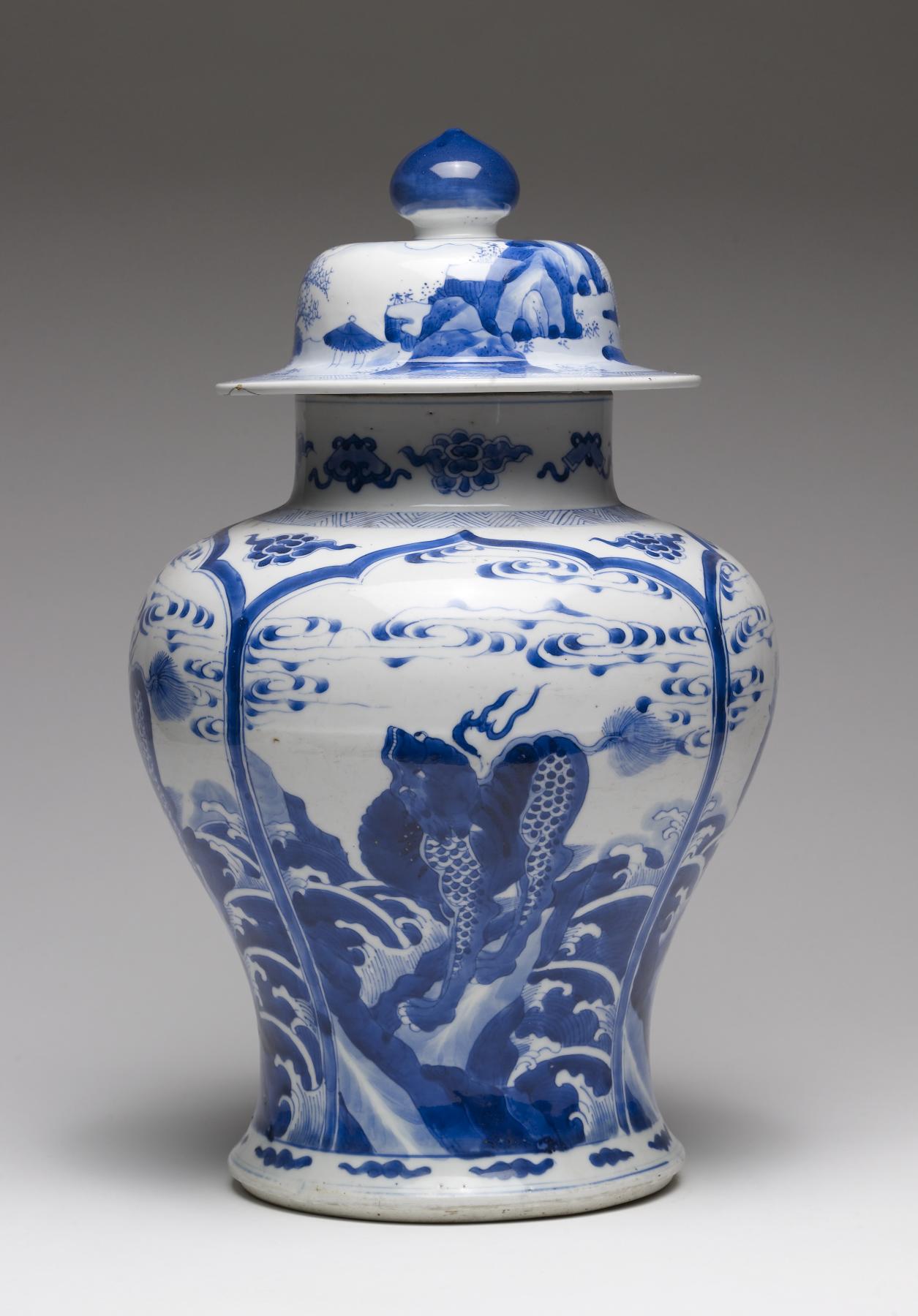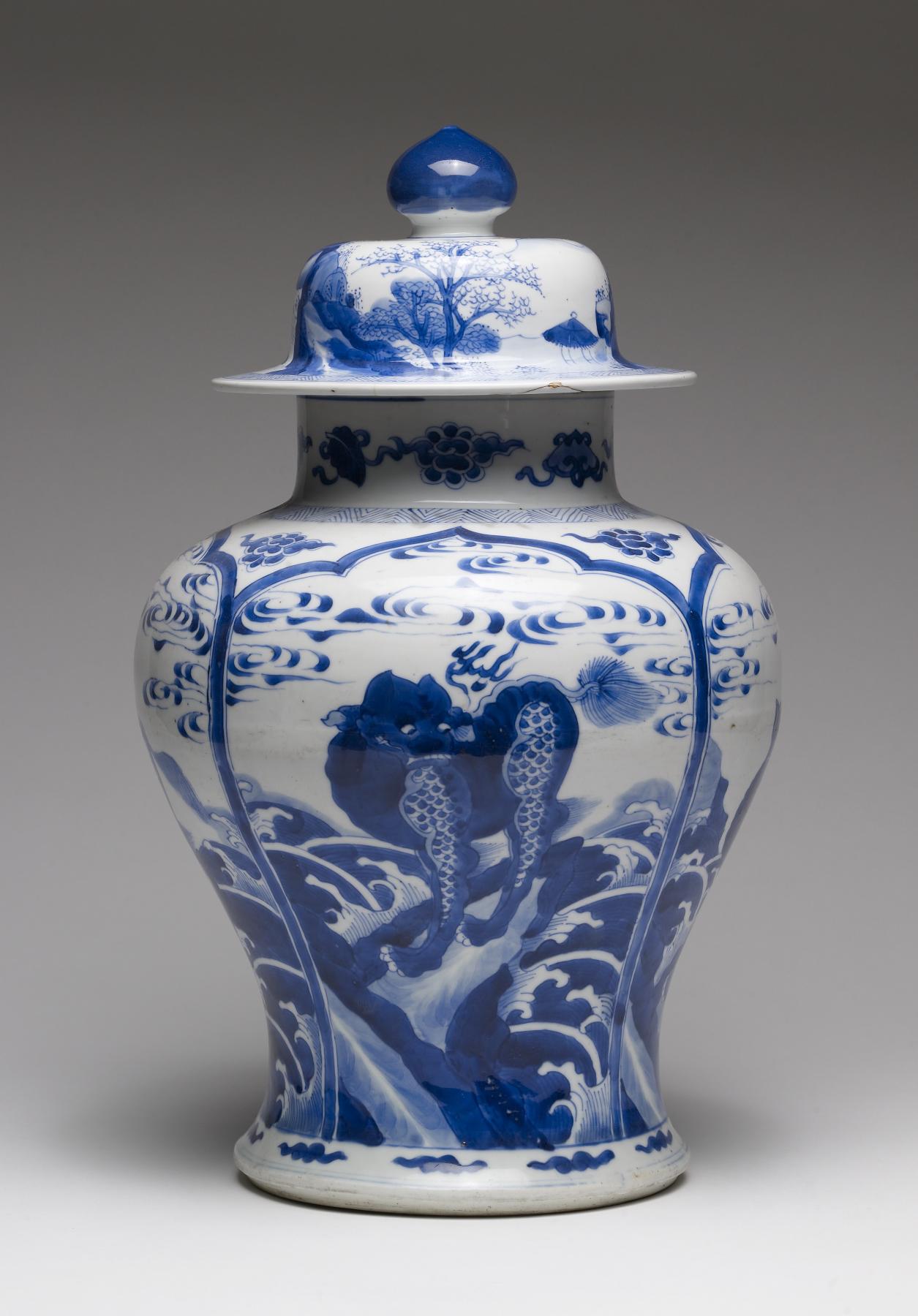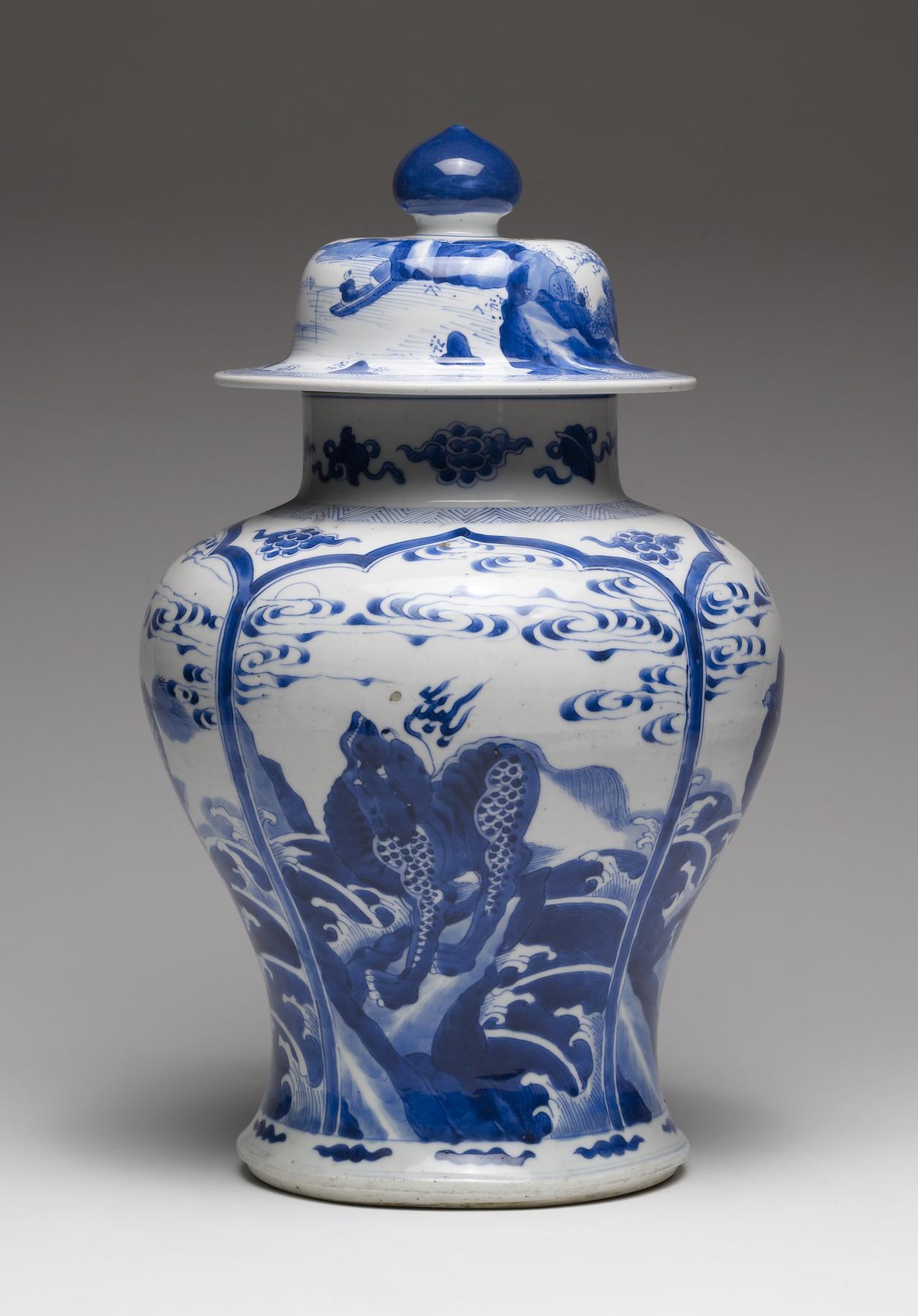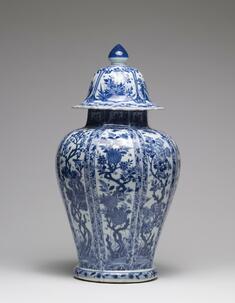Jar
(China )
The meiping shaped jar, with broad round shoulders and narrowed everted foot, is decorated on four sides with composite mystical creatures that combine the head, scales, and flames of a dragon with the body shape, bushy tail, and paws of a lion. Each lion-dragon stands on a rock jutting from crested waves; scrolled clouds swirl overhead in the sky. Buddhist emblems and Taoist Treasures are painted on the neck alternating with cloud scrolls; included are The Conch, The Artemesia Leaf, The Musical Stone, and The Umbrella. The lid, which flares out over the shoulder and is topped with a radish-shaped handle, is painted with a landscape of mountains, trees, a humble hut, and a river where a man fishes.
By the late 1600s, groupings of five or seven Chinese porcelain vessels with alternating shapes were often displayed over doors in European homes. A complete set was called a "garniture." This jar, painted with underglaze cobalt blue decoration, is a garniture piece made for export.
Provenance
Provenance (from the French provenir, 'to come from/forth') is the chronology of the ownership, custody, or location of a historical object. Learn more about provenance at the Walters.
William T. Walters, Baltimore [date and mode of acquisition unknown]; inherited by Henry Walters, Baltimore, 1894; by bequest to Walters Art Museum, 1931.
Geographies
China (Place of Origin)
Measurements
H: 17 in. (43.2 cm)
Credit Line
Acquired by William T. Walters
Location in Museum
Charles Street: Second Floor: 17th-Century Dutch Cabinet Rooms
Accession Number
In libraries, galleries, museums, and archives, an accession number is a unique identifier assigned to each object in the collection.
In libraries, galleries, museums, and archives, an accession number is a unique identifier assigned to each object in the collection.
49.2292











